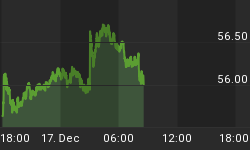For more than a decade I have been studying the way market fractal patterns develop, and I have made significant progress in understanding the underlying structure in price movement, which is mostly based on the same laws that govern the way energy distributes in the natural world.
But more recently I have focused my attention on recurring patterns in time, and somewhat to my surprise, I have found there is also a significant amount of predictable structure in the timing of market trends and reversals.
My work on timing stems from the original observations of economist Martin Armstrong, who discovered the 8.6 year cycle in equity markets. You can read his original report by following this link.
Armstrong looked back into market history and counted 26 financial panics over a 224 year period. Dividing 26 into 224 yields an average period of 8.6 years, which turned out to have much more significance than he first imagined, as significant turning points started to arrive like clockwork right on schedule every 8.6 years, in many instances to the day.
Armstrong subsequently figured out that 8.6 years works out to 3,141 calendar days, which is Pi x 1000 days.
But after working on this myself, I think the significance of 8.6 is due to a different reason. It is extremely interesting to note that within each 8.6 year period -- i.e., 3,141 calendar days -- there are 2,240 trading days, and 2,240 is almost exactly equal to the square root of 5 (times 1000 days.)
Let's also make a mental note right here that this number -- 2,240 trading days -- is very similar to Armstrong's original observation of 26 financial panics in a 224 year period. We are not done with this relationship between 224 and 26, as this is where one of the "surprise twists" in this hopefully riveting market detective story will soon develop.
Before getting to that, we have to first be aware of a group of intellectuals in ancient Greece, led by a still-famous large-brained fellow named Pythagoras, who believed that the natural world develops according to strict geometric relationships. Almost everybody at some point in their academic career has encountered the famous Pythagorean Theorem, shown below.

There is still a vibrant area of study to this day on the topic of "sacred geometry," although lately it seems to have veered-off quite heavily into the "mysto" realm of crystals, meditation, tie-dye, and the like. But the Pythagoreans -- and later Plato -- believed that the fundamental shapes in the natural world can be derived from the 3 irrational numbers shown in the figures below.


After looking at the way gold behaves, the only conclusion is that these Greeks were definitely on to something!
Because the way that market fractal patterns grow and develop in time are quite clearly based on these same 3 irrational numbers, and this fundamental geometric relationship.
I have just posted a new Special Report on how this timing cycle works in the gold market -- as well as other markets, like equities -- which is only available to subscribers of the Fractal Gold Report.
However, for a limited time we are offering a 30-day free trial to the Fractal Gold Report, which gives full access to this new report as well as the previous Special Report on the monthly parabolic growth pattern now in control gold. If you sign up you will also receive daily updates on gold and equity markets.
Just this past week gold hit a critical turning point on this timing cycle, which we knew about weeks in advance. So this is a perfect time to come in on this free offer and learn about my unique methods for forecasting gold and any other financial market.















